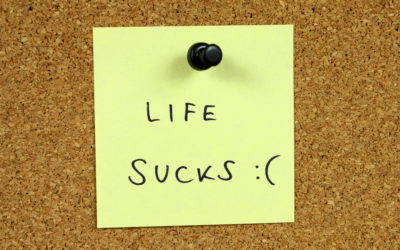When I first began sharing the principles behind the inside-out understanding with clients and on our professional training and development programs, I came up with an unofficial, highly subjective, yet fairly reliable way of evaluating whether someone was really seeing the revolutionary implications of this understanding:
If they weren’t at some level thinking “Holy F*#king Mother of God”, they probably weren’t yet really seeing the power of the principles in action.
Now if you’re new to the inside-out understanding, here is a very quick précis of the principles – the three foundational elements out of which all life is created:
|
Because the words “mind”, “consciousness”, and “thought” are all part of our culture, it’s not uncommon for people to hear about the principles and equate them with the more common usage of these phrases.
Here are the most frequent misunderstandings of the principles that in my experience can get in the way of people truly seeing their power and potential…
1. The principle of Mind vs. “the brain” and “metaphysics”
When people talk about the “power of the mind”, they are usually either pointing to either the amazing capacities of the human brain or some variation of the “law of attraction”.
Brain science is, to me, a fascinating field and the more we can learn about glial cells and neuro-plasticity the better. But when we equate Mind and the brain, we are essentially saying that the power of a computer is in its circuit boards. Without something to power up those circuit boards. Without something to power up those circuit boards and a BIOS (Basic Input/Output System) baked into the firmware to make things make sense – in my metaphor, the principle of Mind – the human biocomputer is rendered completely useless.
To explore the metaphysical side of the coin,the law of attraction is usually defined as “like attracts like”, “we become what we think about”, or more colloquially, “birds of a feather flock together”. While much of this is observable, in my experience the “law” breaks down when people attempt to use it as a tool of acquisition in their lives. For every parking space we manifest or synchronicity we experience, there are a thousand more situations where what we think does not immediately appear in the world around us.
While the usual response to this seems to be “you weren’t doing it right”, I prefer to enjoy noticing that there seems to be what the physicist David Bohm described as “an implicate order” – an underlying wholeness within which the world of 10,000 separate things arises and fades away. Seeing that we are made of the same energy as every other living thing in the universe and that there is a perfection to the way things unfold doesn’t give us control over creation, but it does afford us the wonder of experiencing life as the mystic poet William Blake once described it:
And a Heaven in a Wild Flower, Hold Infinity in the palm of your hand And Eternity in an hour. |
2. The principle of Consciousness vs. “awareness”
Awareness, or “mindfulness” practice is all the rage at the moment, and there’s no question that learning to be more present to our thinking and actions in the moment has a positive impact on our health, well-being, and effectiveness in the world. But to say we are becoming “more conscious” in our daily lives is usually a way of saying we are becoming “less distracted” – an undoubtedly useful and helpful thing, but not exactly HFMOG territory.
When mindfulness and similar awareness practices begin to become truly transformative is when they wake us up to our deeper nature – what the Buddhists call “the unconditioned mind” and theosopher Syd Banks described as “pure consciousness uncontaminated by our personal thinking”.
To become conscious of the fact that we have an existence beyond our internal dialogue and emotions, beyond the neurotic desires and ego needs of the personality, and beyond our conditioned thoughts and opinions of life is the first step in the awakening of the human potential – to recognize that we are both wave and ocean. It is to see that as the Jesuit Teillard de Chardin wrote “we are not human beings having a spiritual experience – we are spiritual beings having a human experience”. And in that quantum leap from personal awareness (“self-consciousness”) to transpersonal awareness (“enlightenment”, “God consciousness”, or “cosmic consciousness”), the world we live in gets turned on its head and our hearts open up to compassion and love at previously unimaginable levels.
3. The principle of Thought vs. “thinking”
When I first was learning about the inside-out understanding, I thought that as an NLP master trainer, I was already a master of thought and thinking. But about 20 minutes into a conversation with a principles-based practitioner, I realized that what he meant by Thought and what I meant by thinking were two completely different things.
Since I “knew” that my thoughts created my experience of life, I assumed that by gaining control over both the content of my thinking (i.e. what I thought about) and the structure of my thinking (i.e. how I thought about it), I could gain control of my experience.
But what I began to see is that control is a poor substitute for freedom, and that what I thought about things was nowhere near as powerful as seeing the fact that the things themselves were made of Thought.
To better understand the power of Thought, consider an iceberg. While icebergs can appear anywhere from 1 foot to 551 feet above sea level (the height of a 55 story building), the visible part of the “ice mountain” is generally only 1/9 of the full size. That means that even the smallest iceberg penetrates 9 feet deep into the ocean, while the invisible portion of the largest recorded iceberg is nearly 4 times the size of the Empire State Building.
So far, this fits with most models of the mind as containing a conscious part, which can process up to 40 bits of information per second, and the sub or unconscious, which some scientists believe can process as many as 40 million bits of information per second. The argument is that since so much more is going on “underneath the surface” than we know, the most powerful thing we can do to change our lives is to find ways to access, program, and reprogram the unconscious.
But what is missed in this metaphor is that icebergs only exist in the middle of large bodies of water – and while they appear solid, they are actually made of the same water that surrounds them. In our efforts to get past the “icebergs” in our minds, we fail to see that what is holding up our boat is made of the same stuff – Thought – as the thinking we are struggling to control or change.
To believe that a problem exists independent of the thinking which creates it is like believing that an iceberg can exist without the water that makes it up. It’s simply not the way things actually work.
So when we see that all of our problems are made up of Thought, a new possibility emerges. In any moment, what seems like a solid and insoluble problem in your life could disappear back into the formless energy out of which it came.
And for me, realizing that no matter what I’ve been through in the past, am dealing with in the present, or might face in the future, I will only ever be one thought away from a true sense of freedom and possibility, fills me with humility and awe and calls forth a “HFMOG” feeling from the very depths of my being…
With all my love, |




